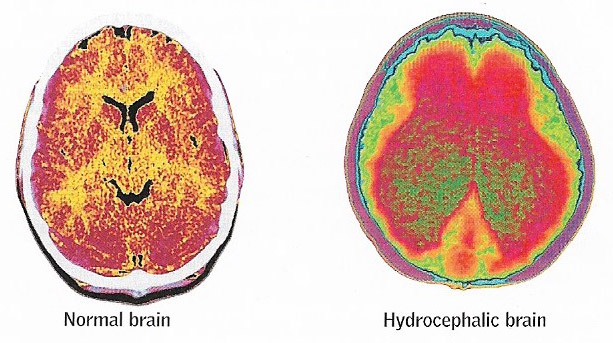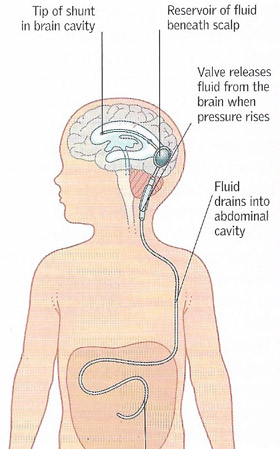hydrocephalus

The CT scan of a hydrocephalic brain (right) shows enlarged ventricles (red and green areas). In the scan of a healthy brain (left) the ventricles are seen in black.
Hydrocephalus is an increase in volume of cerebrospinal fluid (CSF) in the ventricles of the brain. It is a condition that exerts dangerous pressure on brain tissue. It can be due either to obstruction, preventing the CSF from draining away, or to a failure of natural reabsorption. In babies it is congenital, often associated with spina bifida, and causes a characteristic enlargement of the head; in adults, it may arise from brain injury or disease. Hydrocephalus is treated by insertion of a shunting system to drain the CSF harmlessly into the abdominal cavity.
 |
| To treat hydrocephalus, a shunt (a drainage tube) is inserted into the brain. This diverts excess cerebrospinal fluid to another part of the body where it can be absorbed into the bloodstream. The fluid is released through a valve when pressure increases and drains into either the abdominal cavity or, rarely, a chamber in th eheart. |


